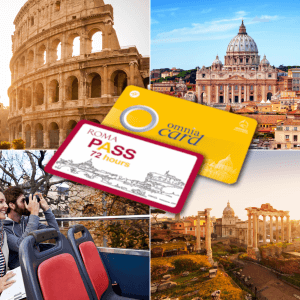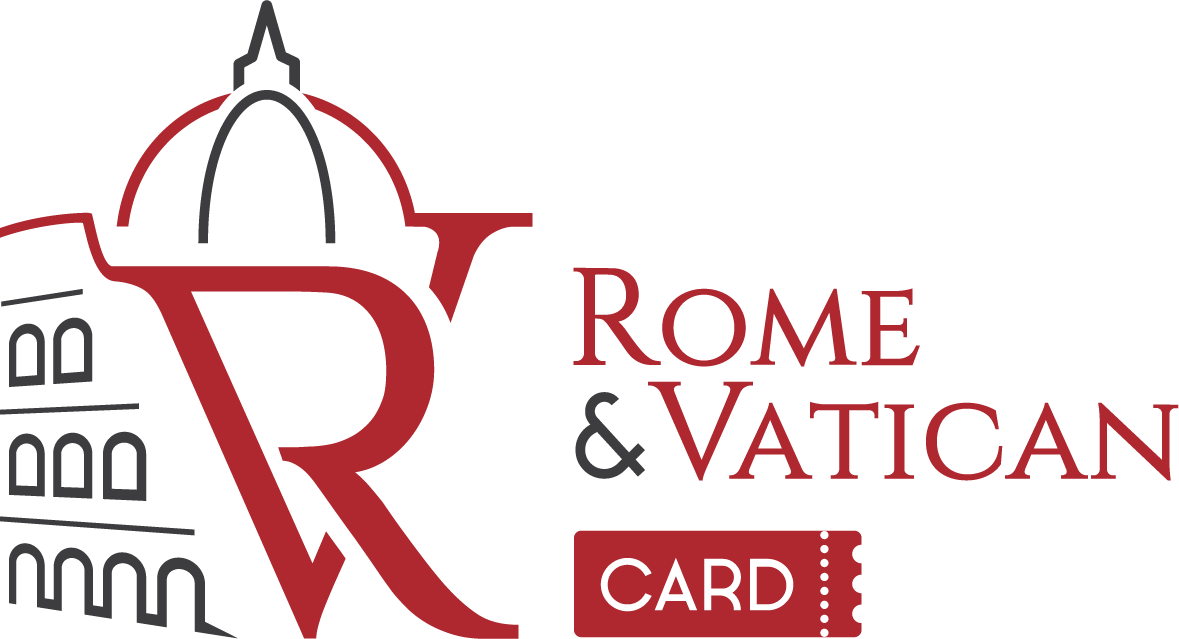Visiting St Peter’s Dome: Climb, Tickets, Tips and Panoramic Views
- 12 min read
In this article, you’ll find everything you need to plan your visit to St Peter’s Dome: how to climb it, when to go, where to get tickets, and the best spots to photograph it from below. Discover Rome’s most breathtaking view and one of Michelangelo’s greatest masterpieces.


St. Peter’s Basilica Guided Tour + Dome elevator and Papal Tombs | Reserved Entry
What is St Peter’s Dome?
What is St Peter’s Dome, and who designed it?
St Peter’s Dome, also known as Michelangelo’s Dome, crowns St Peter’s Basilica in Vatican City. Its conception began in the Renaissance, and the dome we admire today largely owes its design to Michelangelo Buonarroti. Called to the project in 1546, Michelangelo inherited existing plans from predecessors such as Bramante, Raphael, and Giacomo della Porta. Embracing Bramante’s centralized vision, Michelangelo introduced a robust, ribbed hemispherical dome — a synthesis of architectural genius and spiritual ambition.
When was St Peter’s Dome built, and how old is it?
Construction spanned from 1547 until Michelangelo’s death in 1564, but the dome wasn’t completed until 1590 by Giacomo della Porta and Domenico Fontana. Today, the dome stands more than 430 years old — a timeless masterpiece of Renaissance engineering.
How tall is St Peter’s Dome, and what’s its structure?
The dome reaches approximately 136.5 m (448 ft) from the floor of the basilica to the top of the cross — a breathtaking ascent. Structurally, the dome features a double-shell design: an inner shell accessible to visitors and an outer shell that defines its elegant silhouette against the skyline. Sixteen massive ribs reinforce its structure, creating a graceful yet imposing form.
Are there papal symbols and inscriptions?
Yes — around the drum you’ll find Latin inscriptions quoting verses from the Book of Psalms: “TV ES PETRVS ET SVPER HANC PETRAM AEDIFICABO ECCLESIAM MEAM…” (“You are Peter, and on this rock I will build my church…”). Above, the dome is adorned with papal coats of arms and sculpted angels — reminders of its sacred purpose and patronage.
This architectural icon, rooted in centuries-old faith and artistry, continues to inspire awe — inviting every visitor to step into a living tribute to human vision and devotion.
Where is St Peter’s Dome?
St Peter’s Dome is perched atop St Peter’s Basilica in Vatican City, right where Rome meets a spiritual destination. From St. Peter’s Square, your eye is naturally drawn upward along Gian Lorenzo Bernini’s embracing colonnade, which frames the grandeur of the basilica and leads directly to the majestic facade crafted by Carlo Maderno in 1612. Before ascending to the Dome, take a moment to admire:
- Bernini’s Colonnade: A sweeping, four‑row colossus of 284 Doric columns, symbolizing the maternal arms of the Church welcoming pilgrims.
- Maderno’s Façade: With its Ionic order and monumental scale, topped by balustrades of Christ, the apostles, and John the Baptist.
- The Bronze Doors: Embellished with reliefs of saints, martyrs, and crucial moments in Christian history, including Josef A. Folch’s Gates of Death — a meditative introduction to the sacred world within.
Here in this open piazza, surrounded by architectural icons, you begin your ascent both physically and spiritually.
Why Visit St Peter’s Dome?
Climbing St Peter’s Dome is more than a vantage point — it’s a transformative journey through history, art, and cityscape, each step immersed in the legacy of Renaissance ingenuity. First and foremost, the dome offers unparalleled 360° panoramas: as you emerge onto the summit terrace, the sprawling Eternal City unfolds beneath your feet — ochre rooftops, domes, ancient ruins, and the silver thread of the Tiber River weaving through. This sweeping vista, stretching from the tranquil Vatican Gardens to the distant Sabine Hills, is a visual symphony that no photograph can fully capture, inviting you to pause, breathe, and absorb Rome’s layered beauty from above.

Licenza: CC BY-SA 3.0
But the experience transcends mere scenery — it immerses you in Michelangelo’s architectural mastery. Designed during the high point of the Renaissance, this dome is a structural and aesthetic marvel: its ribbed double shell and balanced proportions embody the genius of its creator. Standing beneath its coffered vaults, you can almost sense Michelangelo’s vision and the collaborative brilliance of Giacomo della Porta and Fontana, who completed his work. Beyond technical prowess, the climb nourishes a sense of spiritual elevation, reflecting the dome’s symbolic role as both a peak of faith and a testament to man’s quest for transcendence.
Finally, visiting the dome connects you directly to centuries of pilgrim journeys and papal ceremonies. As you ascend, you walk in the footsteps of kings, saints, and millions of faithful — their hopes, whispers, and prayers hovering in the silent curves of each step. The call to climb is not simply to see Rome — it’s to experience Rome, from its heart to its heavens.

St. Peter’s Basilica Guided Tour + Dome elevator and Papal Tombs | Reserved Entry
How to Visit St Peter’s Dome: Climb It or take the easier way!
Accessing the dome is an adventure in itself, beginning with passage through the grandeur of St Peter’s Basilica. After passing Vatican security in the vast colonnaded square, follow interior signs marked “Cupola” leading to the dedicated entry point on the right side of the basilica. Here, your choices define your climbing experience:
- Stairs Only: Prepare to conquer all 551 steps, beginning at the dome’s base and winding upward to the summit — a challenge for the fit and adventurous.
- Elevator + Stairs: Take an elevator to the terrace level (after roughly 231 steps), then complete the climb with 320 remaining stairs to the top — a great middle-ground for those looking to conserve energy.
Once inside, beware: the spiral staircase becomes increasingly narrow, steep, and dimly lit. While not overly strenuous, it demands agility, good headroom, and calm nerves — especially for those with claustrophobia. The reward at the top, however, vindicates every careful step: light flooding through the lantern, open sky unfolding in every direction, and the tangible heartbeat of Rome beneath your toes.
Opening Hours and Best Time to Visit
The dome welcomes visitors daily, with seasonal hours tailored to daylight and pilgrimage patterns.
- From April to September, doors open at 8:00 a.m. and close at 6:00 p.m., with last admission typically around 5:30 p.m.
- During winter months (October–March), the schedule slightly contracts, with hours shifting to 8:00 a.m. – 5:00 p.m., and last entry around 4:30 p.m.
To enjoy a magical ascent, target the early morning for serene stillness and soft light, or chase the golden hour — about 60–90 minutes before sunset — when Rome’s monuments turn to gold and shadows play across the city. Keep in mind that on Vatican holidays, religious events, or Pope-led ceremonies, schedules may shift with little notice, so always check official sources before heading out.
Weather is another key consideration: in summer, pack water and shade; in winter or rainy days, dress in layers and consider postponing your climb when steps are damp. With thoughtful timing, your climb can become an unforgettable moment rather than just a sightseeing stop.
Tickets and Booking Tips
Tickets for the dome are not included in the free-entry basilica pass and must be purchased separately. You can choose your access style:
- Stairs Only – 8€: Budget-friendly and rewarding for those who love physical challenges.
- Elevator + Stairs – 10€: Ideal for travelers who prefer a gentler pace or tight schedules — the elevator whisks you up to the terrace before the final climb.
- Guided Dome Tour: Includes a knowledgeable guide to unpack the dome’s symbolism, structural ingenuity, and design details — often bundled with fast-track entry into the basilica.
Purchasing in advance is highly recommended — especially during peak seasons like spring and summer — to guarantee your spot and avoid long queues. Using trusted platforms like Ticket Rome Vatican Card also offers benefits such as flexible cancellation, easy rescheduling, and access to various combo tours (e.g., Vatican Museums + Dome). An early morning or late afternoon timeslot enhances your experience, making every euro well spent.

St. Peter’s Basilica Guided Tour + Dome elevator and Papal Tombs | Reserved Entry
Climbing Experience: What to Expect
Your climb to the dome reveals its history and heart in two phases:
- Terrace Ascent: Whether by elevator or stair, you reach an open-air terrace that encircles the dome’s base. Here, the wind, the breathtaking proximity to the coffered vaults, and the city stretching outward tease your senses with what’s to come.
- Summit Spiral: The final 320-step spiral staircase culminates in a narrow exit leading to the lantern balcony, where the full panoramic spectacle awaits. Every tucked stair echoes with centuries of pilgrims below.
During the climb:
- Expect tight quarters and slanted stairwells that require careful footing and a steady pace.
- Moderate climbing fitness and sturdy shoes are essential. One rest stop near the terrace provides a welcome moment to catch your breath.
- The final platform offers room for reflection — visitors often pause here, leaning on the balustrade, absorbed by the views and atmosphere.
For most, the journey takes 30–45 minutes, combining ascent, moments of pause, and top-level immersion. Bring a water bottle, comfortable footwear, and an eager spirit — the dome’s summit offers rewards far beyond its height.
What You’ll See from the Top
Reaching the top is a breathtaking reward, unveiling a 360° magnum opus of Rome:
- Look west to admire the Vatican Gardens, a lush green heart tucked within bustling Vatican City.
- Eastward, the Tiber River courses gracefully through ancient stone bridges and historic districts.
- On Rome’s skyline, numerous landmarks become visible: the elegant dome of the Pantheon, the massive bastions of Castel Sant’Angelo, and the elegant arcades of Piazza Navona.
From your high perch, you’ll gain a profound sense of Rome’s layered story — Renaissance splendor perched atop ancient foundations, and baroque drama unfolding into modern life. Whether dawn’s soft light or dusk’s golden haze, every moment offers a different canvas — each one more memorable than the last.
Tips Before You Go
To make your experience as smooth as the basilica’s marble floors, keep these tips in mind:
- What to wear: Respect the Vatican’s modest dress code — no shorts above the knee or sleeveless tops. Opt for breathable layers and closed, sturdy shoes suitable for stair ascending.
- Crowd-smart timing:
- Avoid weekends and known Vatican holidays (such as Easter Week or August 15).
- Prefer early morning or late afternoon slots for fewer people and softer light.
- Weather watch:
- Summers call for sun protection and hydration.
- Cloudy or rainy days make the open-air climb slick and chilly — consider an alternate day.
- Basilica access: Dome tickets require entry through the basilica, so coordinate your visit accordingly. Conversely, you can’t ascend the dome without entering the basilica — evidence that this journey is both structural and spiritual.
The Best Places to Photograph St Peter’s Dome
Capturing the dome in all its grandeur is a photographer’s delight — and Rome offers several scenic locations from which you can frame this iconic structure.
One of the most fascinating and lesser-known experiences is found at Via Piccolomini, a quiet residential street southwest of the Vatican. Here, as you drive or walk toward the dome, you’ll witness an astonishing optical illusion: instead of growing larger as you approach, the dome appears to shrink — a visual paradox caused by the surrounding buildings and forced perspective. It’s a magical phenomenon that leaves even seasoned Romans amazed.

Licenza: CC BY-SA 4.0
Another classic spot is the keyhole of the Knights of Malta on the Aventine Hill. Known locally as the “Buco della Serratura,” this tiny peephole in a large green door perfectly frames the dome at the end of a tree-lined garden path.
Other must-visit viewpoints include:
- The start of Via della Conciliazione: framed by Bernini’s colonnade, this straight avenue creates a powerful visual corridor toward the dome.
- The terrace of Castel Sant’Angelo: from this panoramic spot, the dome rises in full splendor above the rooftops, especially striking at sunset.
- La Passeggiata del Gelsomino: this elevated path, often overlooked by tourists, gives you a lateral view of the Vatican skyline amid fragrant greenery.
No matter your choice, the Cupola of St Peter’s is more than just a monument — it’s a visual anchor in Rome’s urban sea, glowing at dawn and golden at dusk, always ready to be admired and photographed.

Omnia card 72h + Roma Pass - Jubilee 2025
FAQs About Visiting St Peter’s Dome
- Is it safe for children?
Yes — but be cautious. The climb’s narrow spiral and low ceilings can challenge young children. Ages 8 and older typically manage well with pacing and occasional breaks. - Can I bring a camera?
Absolutely! Photography is allowed and encouraged. Just bring a handheld or small camera — tripods or selfie sticks are not permitted in the stairwells or summit. - How long does the visit take?
You’ll spend roughly 45 to 75 minutes total: 10–30 minutes navigating queues and elevator/stair setup, 20–30 minutes climbing, and 15–20 minutes enjoying the summit — though you may linger longer once you reach the top. - What if I have mobility issues?
Unfortunately, wheelchair access is not possible. Limited elevator assistance reduces the stair count, but those with serious mobility constraints should consider guided tours with skip-the-stairs options or simply admire the dome from below.
Keep Exploring: What’s Inside St Peter’s Basilica?
Once you’ve conquered the dome, your journey into the wonders of Vatican City is far from over. The interior of St Peter’s Basilica is a treasure trove of masterpieces, from Michelangelo’s Pietà to Bernini’s towering baldachin and centuries of papal tombs. To make the most of your visit, don’t miss our two essential guides:
- What to See Inside St Peter’s Basilica: A curated itinerary through the basilica’s most iconic artworks and chapels.
- Complete Guide to St Peter’s Basilica: Tickets, Opening Hours, Dress Code: Everything you need to plan your visit — from entrance rules to the best times to avoid the crowds.

